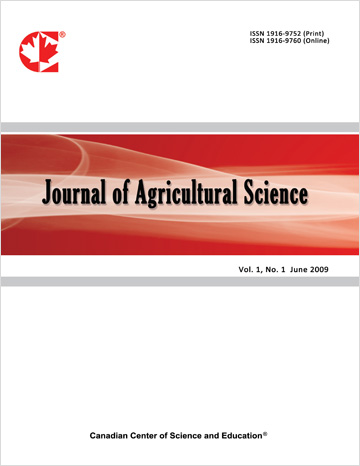Effects of Canthaxanthin on Egg Production, Egg Quality, and Egg Yolk Color in Laying Hens
- J. H. Cho
- Z. F. Zhang
- I. H. Kim
Abstract
The effects of canthaxanthin (CTX) on egg production, (average daily feed intake) ADFI, egg quality, and yolk color compared with natural xanthophylls in feedstuffs in laying hens were studied in a 5-wk trial. A total of 280 36-wk-old ISA Brown layers were divided into the following 7 treatments: T1, negative control (30% corn+20% wheat); T2, diet with 50% corn; T3, diet with 5% DDGS; T4, diet with 10% DDGS; T5, T1+0.011% CTX; T6, T1+0.021% CTX; T7, commercial diet with 40% corn. Although ADFI, and egg quality were not affected by dietary treatments, the egg production was higher (P<0.05) in diet supplemented with 0.021% colorant than diet with 50% corn, and diet supplemented 0.011% colorant. Yolk color in layers fed the diet contained 10% DDGS was higher (P<0.05) than the layers fed the T1 diet, and the diet with 5% DDGS. Yolk color score was linearly improved (P<0.05) when the diet supplemented with 0.011%, and 0.021% CTX. Higher yolk color score was also observed (P<0.05) when layers fed commercial diet compared with control diet, and the diet with higher natural xanthophylls. In conclusion, egg production and yolk color were improved when layers fed diet supplemented with colorant.
S style='font-size:10.5pt;mso-bidi-font-size:12.0pt;font-family:"Times New Roman","serif"; mso-fareast-font-family:??;mso-font-kerning:1.0pt;mso-ansi-language:EN-US; mso-fareast-language:PL;mso-bidi-language:AR-SA'>slightly degraded chernozem, formed from loess. The examined inoculants were applied during sowing. The presented results of the studies on the symbiotic nitrogen fixation by leguminous plants indicate that the productivity of pea was positively affected by the application of IUNG (noncommercial) inoculant. On the other hand, it is not recommended to use NitragineTM separately, as it inhibits the growth of pea. Plants of the ‘Klif’ variety used the symbiotically fixed nitrogen more effectively and demonstrated higher yield component and better phenotypic parameters.
- Full Text:
 PDF
PDF
- DOI:10.5539/jas.v5n1p269
Journal Metrics
- h-index: 67
- i10-index: 839
- WJCI (2023): 0.884
- WJCI Impact Factor (2023): 0.196
Index
- AGRICOLA
- AGRIS
- BASE (Bielefeld Academic Search Engine)
- Berkeley Library
- CAB Abstracts
- ChronosHub
- CiteSeerx
- CNKI Scholar
- Copyright Clearance Center
- CrossRef
- DESY Publication Database
- DTU Library
- e-Library
- EBSCOhost
- EconPapers
- Elektronische Zeitschriftenbibliothek (EZB)
- EuroPub Database
- Excellence in Research for Australia (ERA)
- Google Scholar
- Harvard Library
- IDEAS
- iDiscover
- Jisc Library Hub Discover
- JournalTOCs
- KindCongress
- LIVIVO (ZB MED)
- LOCKSS
- Max Planck Institutes
- Mendeley
- MIAR
- Mir@bel
- NLM Catalog PubMed
- Norwegian Centre for Research Data (NSD)
- Open J-Gate
- OUCI
- PKP Open Archives Harvester
- Polska Bibliografia Naukowa
- Qualis/CAPES
- RefSeek
- RePEc
- ROAD
- ScienceOpen
- Scilit
- SCiNiTO
- Semantic Scholar
- SHERPA/RoMEO
- Southwest-German Union Catalogue
- Standard Periodical Directory
- Stanford Libraries
- SUDOC
- Swisscovery
- Technische Informationsbibliothek (TIB)
- Trove
- UCR Library
- Ulrich's
- UniCat
- Universe Digital Library
- WorldCat
- WRLC Catalog
- Zeitschriften Daten Bank (ZDB)
Contact
- Anne BrownEditorial Assistant
- jas@ccsenet.org
